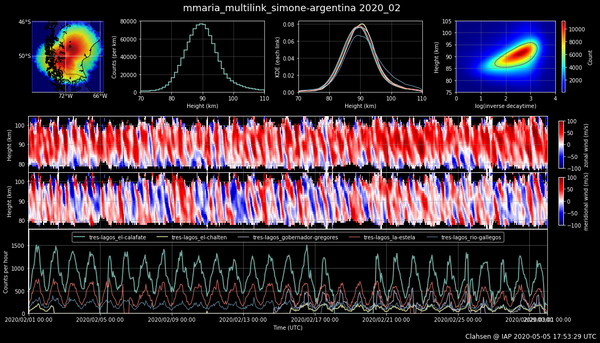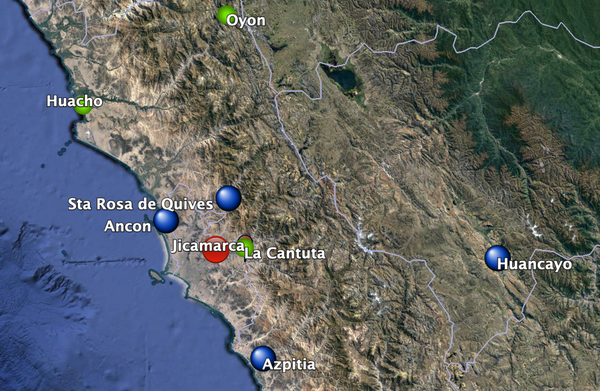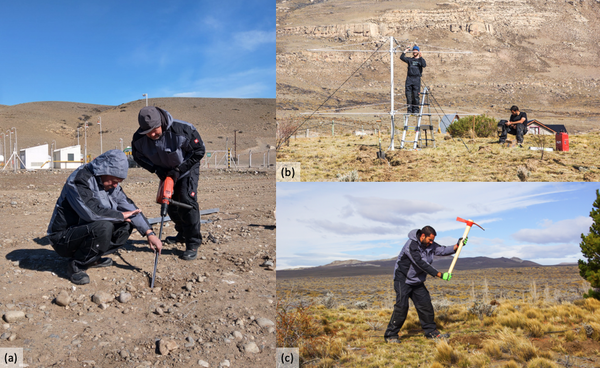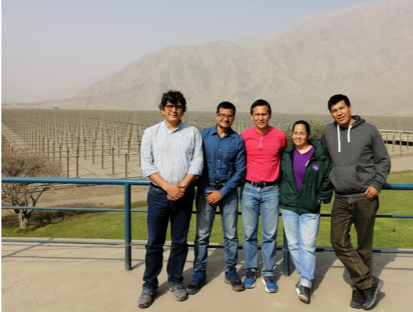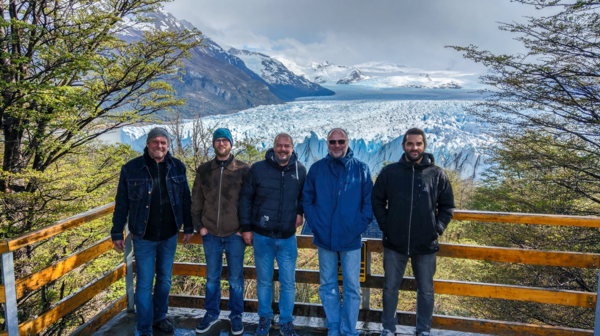SIMONe in South America
Six months of MLT observations in Peru and Argentina with a new radar network
Kühlungsborn, 03 June 2020
The mesoscale structures of the Mesosphere / Lower Thermosphere (MLT) are mainly unexplored, in particular their horizontal dimensions. Recently, a special operating modus for meteor radars has been developed, that is named MIMO (Multiple-Input Multiple-Output). Coded signals are transmitted to the sky, reflected and received by different stations. For each signal, the individual ray path is then calculated and the four-dimensional wind field can be reconstructed from multiple observations of reflectors (meteor echoes). This system is named SIMONe – for „Spread spectrum Interferometric Multistatic meteor radar Observing Network“.
The first SIMONe installation outside of Europe has been placed in a mountaneous region in Argentina, where also international field campaigns are being conducted. SIMONe Argentina consists of one transmitter and five receivers. One of the stations, El Calafate, has a special relation to Mecklenburg: Gunther Plüschow. Mr. Plüschow, son of an old mecklenburg family branch, undertook a series of expeditions to South America and died in 1931 at the foot of the El Perito Moreno glacier near El Calafate in an airplane accident.
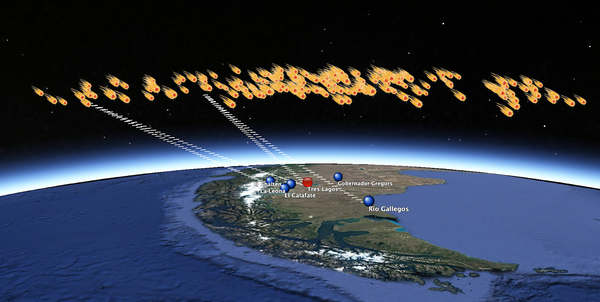
First tests have been successfull - an example of standard observation is shown. Although our main focus is the studies of orographically induced waves over this interesting area, our preliminary results are focused on large scales features of the MLT winds. In the first six months, we found that the dominant wave is the semidiurnal tide as expected from our exprience in northern latitudes, however, we also observed quasi-two day waves with amplitudes much stronger than in northern latitudes. The estimation and evaluation of horizontally resolved winds and gravity wave information (e.g., momentum fluxes) are currently on-going.
A second system, similar to SIMONe Argentina, has been installed in central Peru (SIMONe Peru). The transmitter is located at the Jicamarca Radio Observatory, - a reference station specialized on equatorial ionospheric observations, while five receivers have been installed between 50 and 200 km from Jicamarca. One of the stunning pheomena there is the equatorial electrojet which is characterized by a strong current flowing at about 100 km in altitude. It was discovered in the early 1920 at Huancayo Observatory, one of the receiver stations. The main objective of SIMONe Peru is to study the connection between MLT dynamics, lower atmospheric forcing, and ionospheric variability.
After a few weeks of intense work back in September 2019, both installations are continuously running slighlty over six months. As an example we show here meteor counts and winds over three days over Peru. What we clearly see, is that contrary to midlatitudes, at this low-latitude site the dominant wave is the diurnal tide. Although the main focus of our systems are the MLT neutral winds, they are also capable of detecting echoes due to bolides, airplanes, and ionospheric plasma irregularities.
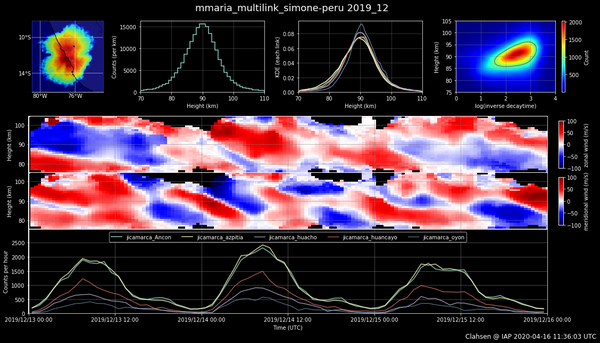
Having the instrumentation up and running includes a history of engaged work of many people on system development, installation difficultites, shipping organization, reliable power supply, administrational arrangements, and being in another country, it also requires a lot of flexibility and be prepared to the unexpected.
SIMONe is a research activity lead by the Radar Remote Sensing Department at IAP, in close cooperation with Universidad Nacional de la Patagonia Austral (Argentina), the Instituto Geofisico del Peru, Ciencia Internacional (Peru), the Arctic University in Norway and the MIT Haystack Observatory. Technical developments and research related to these installations are being partially funded by the Deutsche Forschungsgemeinschaft (DFG, German Research Foundation) under SPP 1788 (DynamicEarth)-CH1482/2-1 and under SPP 1788 (CoSIP)-CH1482/3-1.
The Leibniz-Institute of Atmospheric Physics is one of the German main centers for Middle Atmosphere research and The Leibniz-Institute is one of the German main centers for Middle Atmosphere research and maintains active cooperations with several international research organizations. The institute is located near the Baltic Sea resort Kühlungsborn, owns a separate site on the island Rügen, and is a major partner of the ALOMAR observatory in northern Norway. As associated institute of the Rostock University it is part of the teaching programme in physics. A total of about 90 persons is employed at IAP. The institute realizes an equal-opportunity and family-friendly human resource policy and is certified with the audit "berufundfamilie"
('career and family').












